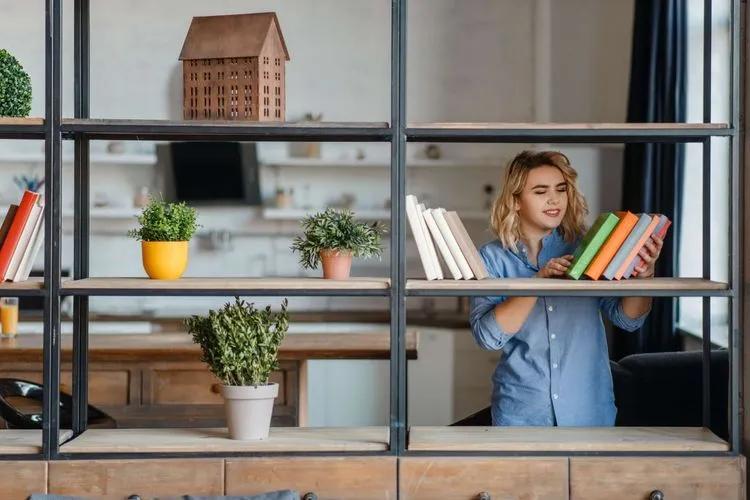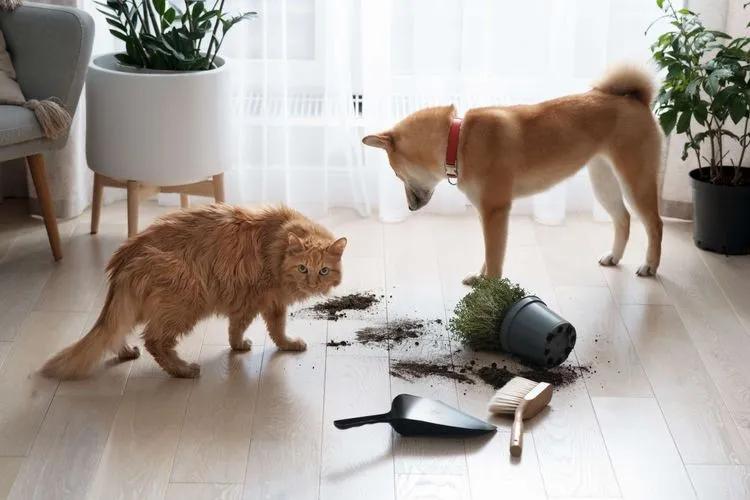 Have you ever come up with the idea of decorating your home with plants? If you have never had plants at home before, then start home gardening with a few unpretentious and easy-to-care species. Sansevieria, Zamioculcas, Benjamin's ficus or Aloe vera are only several perfect options for novice gardeners. A universal advice for novice florists is to read more about the plant that you like and match its cultivation characteristics with your lifestyle.
Have you ever come up with the idea of decorating your home with plants? If you have never had plants at home before, then start home gardening with a few unpretentious and easy-to-care species. Sansevieria, Zamioculcas, Benjamin's ficus or Aloe vera are only several perfect options for novice gardeners. A universal advice for novice florists is to read more about the plant that you like and match its cultivation characteristics with your lifestyle.
Pets
In case you have animals at home, avoid choosing plants that may be poisonous to them. Cats and dogs are very curious and will definitely want to meet a new green friend.
Lifestyle
If you have a busy lifestyle, or are rarely at home, or you know you can forget about watering, choose plants that will tolerate drought without dying.
Lighting
If you decide to decorate the northern windowsill, take a look at the species that do not require bright sun.
Space
 Do not place too many plants in small apartments. Too many plants can destroy the harmony and integrity of the interior. In that case, pay attention to the ampelos (hanging down) plants - they look great on shelves, chests of drawers. Also, choose plants of small diameter, but with large leaves.
Do not place too many plants in small apartments. Too many plants can destroy the harmony and integrity of the interior. In that case, pay attention to the ampelos (hanging down) plants - they look great on shelves, chests of drawers. Also, choose plants of small diameter, but with large leaves.
Transplantation
After you decide on the plant species and purchase it, you need to carry out replanting. The main rule: the new pot should not be smaller than the original one; a couple of centimeters in diameter wider would be perfect. It is better to immediately try on the plant for a new pot in a flower shop and imagine how it will look in your interior.
The further procedure is quite simple. You will need drainage (the easiest way is to take expanded clay - it is perfect for any color) and soil. Buy special soil for specific plant species. At the bottom of the pot, add a layer of drainage - about one quarter of the height - and some earth. Remove the plant carefully from the shop pot. Try to straighten the root system a little, freeing some of the old soil. Then plant it in a new pot, dusting it with a thin layer of soil. Do not apply fertilizer immediately upon planting - it will stress the plant.
Lighting
 Different plants require different amounts of light: place them in the house according to their requests. It is better to place light-loving species where they get the maximum of sunny beams. Any window sills are suitable for shade-tolerant ones, and shade-loving ones can feel good in the back of the room.
Different plants require different amounts of light: place them in the house according to their requests. It is better to place light-loving species where they get the maximum of sunny beams. Any window sills are suitable for shade-tolerant ones, and shade-loving ones can feel good in the back of the room.
In summer, the daylight hours are quite long, so the plants will be fine without additional light stimulation, but closer to autumn it is worth getting a phyto lamp. In the warm season, plants can be taken out onto the balcony. They will receive more light there and will delight you with lush greenery.
Watering
Water your plants properly - excess moisture is much worse than lack of moisture. Also, try not to use tap water (better use filtered water). Don’t forget about regular misting: it’s a good way to increase humidity at home. Spraying the leaves will help maintain a comfortable microclimate for the plants.
Purchase
Be vigilant when buying and inspecting a plant: if you find specks, fluffs, dots, they may indicate an infection. Elastic crown, smooth leaves without damage, absence of living creatures and mold in the soil are signs of a healthy plant. When purchasing an indoor flower, be sure to ask the seller about watering, lighting, and fertilizing conditions. Choose the pot with holes in the bottom or a decorative planter for the pot that suits your interior. If you have already had other plants in your house, then the newly purchased ones must be put separately for a few weeks. Such “quarantine” will help them to avoid stress.
Location
Before making your first purchase, consider where your green friends will live. Do not move them often - plants get used to a certain environment. Think of the location of the room - is it on the sunny side, or not? How much natural light does it get during the daytime, and what is the average daily temperature in your apartment? Plants, like other living organisms, depend on the sun and will lean towards it. However, intense direct sunlight is also damaging to many plants, with the exception of cacti and some succulent species. Some plants, such as aloe, bamboo and dracaena, do not resist moisture, so they are perfect for your bathroom.
Final thoughts
If you have never had any experience in planting, do not buy numerous flowers at once. Better start with 2-3 different species and slowly get used to caring for them. If successful, you can start expanding your plant collection based on your own preferences and experience.
At first, all this may seem too confusing and complicated. But, as in any other business, in planting everything comes with experience. Don't be discouraged if something doesn't work out for you. If you approach the issue of gardening thoughtfully, you will definitely succeed!
